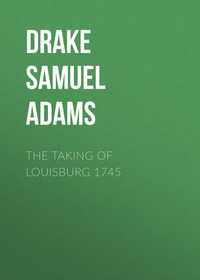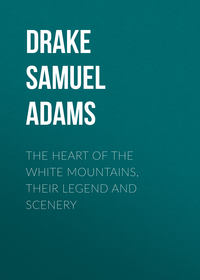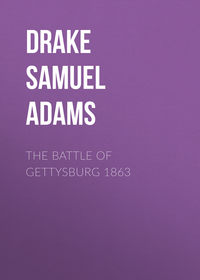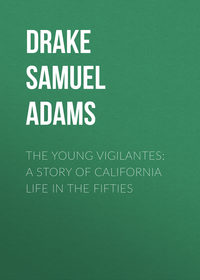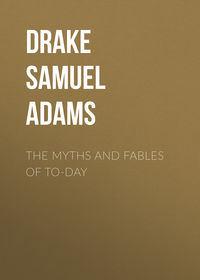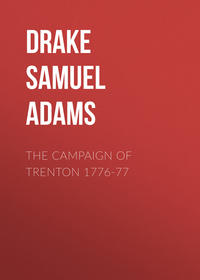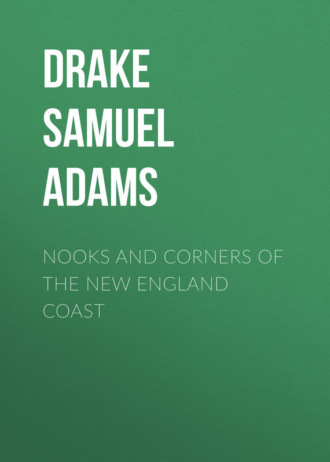 полная версия
полная версияNooks and Corners of the New England Coast
Saybrook was also the original site of Yale College, fifteen commencements having occurred here. The building, which was of a single story, stood about midway between fort and palisade. Its removal, in 1718, to New Haven occasioned great excitement, and the library had to be carried away under the protection of a guard. The Saybrook Platform, so called, was adopted here after the commencement of 1708. Harvard and Yale were in infancy probably not different from those Scotch universities which Dr. Johnson said were like a besieged town, where every man had a mouthful, but no man a bellyful.
The shores about Saybrook offer little that is noteworthy. On the beach the tide softly laps the incline of sand, that looks like a slab of red freestone, fine-grained and hard. A dry spot flashing beneath your tread, or perhaps a sea-bird circling above your head, attends your loiterings.
Look now off upon the Sound, where the golden sunset is flowing over it, gilding the waves, the distant shores, and the sails of passing vessels with beams that in dying are transfused into celestial fires. Idle boats are rocked and caressed on this golden sea. Yonder distant gleam is a light-house, kindled with heavenly flame. The world is transfigured, that we may believe in Paradise. Soon yellow flushes into pale crimson, blending with a sapphire sky. Standing on the strand, we are transformed, and seem to quaff of the elixir of life. Now the violet twilight deepens into sombre shadows. A spark appears in the farther sea. Soon others shine out like glow-worms in your path; while twinkling stars, seen for a moment, disappear, as if they, too, revolved for some more distant shore. The Sound becomes a vague and heaving blackness. And now, with gentle murmurings, the rising tide effaces our wayward foot-prints.
THE END1
"Et que passé cette rivière la côte tourne à l'Ouest et Ouest-Norouest plus de deux cens cinquante lieues," etc.
2
The monk André Thevet, who professes to have visited Norumbega River in 1556, says it was called by the natives "Agoncy."
3
According to the Abbé Maurault, Pentagoët, in the Indian vocabulary, signifies "a place in a river where there are rapids." On the authority of the "History of the Abenaquis," Penobscot is, "where the land is stony, or covered with rocks."
4
It is curious that three Italians – Columbus, Cabot, and Verrazani – should lead all others in the discoveries of the American continent.
5
Giambetta Ramusio, the Venetian.
6
Champlain's map of 1612 is entitled "Carte Geographiqve de la Novvelle France Faictte par le Sievr de Champlain Saint Tongois, Cappitaine Ordinaire povr le Roy en La Marine. Faict len 1612." All the territory from Labrador to Cape Cod is embraced in this very curious map. Some of its details will be introduced in successive chapters as occasion may demand. There is another map of Champlain of 1632, fort detaillé, but of less rarity than the first.
7
By Ben Perley Poore and John Romeyn Brodhead.
8
"Massachusetts Archives, French Documents," vol. i., p. 269.
9
Rev. B. F. De Costa's "Northmen in Maine."
10
"Mass. Archives, French Documents."
11
Ibid.
12
"Champlain's Voyages," edit. 1613. Mount Desert was also made out by the Boston colonists of 1630. The reader is referred for materials of Mount Desert's history to Champlain, Charlevoix, Lescarbot, Biard, and Purchas, vol. iv.
13
She was one of the queen's ladies of honor, and wife of the Duke of Rochefoucauld Liancourt.
14
Champlain: Mr. Shea says he was only a lay brother.
15
This has a resemblance to Kenduskeag, and was probably the present Bangor.
16
Charlevoix says the landing was on the north side of the island.
17
"History of Maine," vol. i., p. 80.
18
See Williamson, vol. i., p. 79; "Resolves of Massachusetts," July and November, 1787; "New York Colonial Documents," vol. ix., p. 594. Mr. De Costa has given a summary of these in his pleasant little book.
19
Lescarbot, vol. ii., p. 471.
20
Named for General John Thomas, of the Revolution.
21
Williamson's "History of Maine."
22
Jefferson had his Monticello, Washington his Mount Vernon.
23
Its Indian name was Passageewakeag – "the place of sights, or ghosts." It contained originally one thousand acres, which the settlers bought of the heirs of Brigadier Waldo at two shillings the acre. Belfast was the first incorporated town on the Penobscot. It suffered severely in the Revolution from the British garrison of Castine.
24
In 1797 there were twenty vessels owned in Penobscot River, two of which were in European trade.
25
The upper and larger part is called North Castine.
26
Castine was not incorporated under its present name until 1796. The Indian name of the peninsula was Bagaduce, or Biguyduce.
27
Gordon, vol. iii., p. 304.
28
The man who destroyed Falmouth, now Portland.
29
In 1759 Governor Pownall took possession of the peninsula of Castine, and hoisted the English flag on the fort. He found the settlement deserted and in ruins. —Gov. Pownall's Journal.
30
"The clumsy, shapeless coinage, both of gold and silver, called in Mexico máquina de papa, lote y cruz ("windmill and cross-money"), and in this country by the briefer appellation of "cobs." These were of the lawful standards, or nearly so, but scarcely deserved the name of coin, being rather lumps of bullion flattened and impressed by a hammer, the edge presenting every variety of form except that of a circle, and affording ample scope for the practice of clipping: notwithstanding they are generally found, even to this day, within a few grains of lawful weight. They are generally about a century old, but some are dated as late as 1770. They are distinguished by a large cross, of which the four arms are equal in length, and loaded at the ends. The date generally omits the thousandth place; so that 736, for example, is to be read 1736. The letters PLVS VLTRA (plus ultra) are crowded in without attention to order. These coins were formerly brought here in large quantities for recoinage, but have now become scarce." – William E. Dubois, United States Mint.
I think the name of "cob" was applied to money earlier than the date given by Mr. Dubois. Its derivation is uncertain, but was probably either "lump," or from the Welsh, for "thump," i. e., struck money.
31
On an old map of unknown date Castin's houses are located here.
32
Sedgwick's Letter, Historical Magazine, July, 1873, p. 38.
33
Williamson thinks the name of Cape Rosier a distinct reminder of Weymouth's voyage.
34
Though Hutchinson says "about 1627," I think it an error, as Allerton, the promoter of the project, was in England in that year, as well as in 1626 and 1628, as agent of the colony. Nor was the proposal brought forward until Sherley and Hatherly, two of the adventurers, wrote to Governor Bradford, in 1629, that they had determined upon it in connection with Allerton, and invited Plymouth to join with them.
35
"Archives of Massachusetts."
36
Aglate la Tour, granddaughter of the chevalier, sold the seigniory of Acadia to the crown for two thousand guineas. – Douglass.
37
Mr. Shea (Charlevoix] says this was John Rhoade, and the vessel the Flying Horse, Captain Jurriaen Aernouts, with a commission from the Prince of Orange.
38
Estates are still conveyed in St. Louis by the arpent.
39
Denonville, who succeeded M. De la Barre as governor-general, was maitre de camp to the queen's dragoons. He was succeeded by Frontenac.
40
Denonville's and La Hontan's letters.
41
Capuchin, a cowl or hood.
42
Count Frontenac was a relative of De Maintenon.
43
Cotton Mather.
44
Isle au Haut is particularly renowned for the size and quality of these fish.
45
This work is on an old map of the Kennebec patent. It was about twenty rods square, a bastion. A house now stands in the space it formerly occupied.
46
"Purchas," vol. iv., 1874.
47
In 1603 Gorges was deprived of the command, but had it restored to him the same year.
48
"Collections of the Massachusetts Historical Society," vol. vi., 3d series.
49
See Lescarbot, p. 497.
50
Strachey. Gorges says August 8th; Smith, August 11th.
51
A fly-boat, the Gift of God, George Popham; Mary and John, of London, Raleigh Gilbert.
52
Samoset, in 1625, sold Pemaquid to John Brown. His sign-manual was a bended bow, with an arrow fitted to the string. The deed to Brown also fixes the residence, at Pemaquid, of Abraham Shurt, agent of Elbridge and Aldworth, in the year 1626.
53
New York Colonial Documents," vol. iii.. p, 256, Some primitive defensive works had existed as early as 1630, rifled in 1632 by the freebooter. Dixy Bull.
54
It was of stone; a quadrangle seven hundred and thirty-seven feet in compass without the outer walls, one hundred and eight feet square within the inner ones: pierced with embrasures for twenty-eight cannons, and mounting fourteen, six being eighteen-pounders. The south wall fronting the sea was twenty-two feet high, and six feet thick at the ports. The great flanker, or round tower, at the west end of the line was twenty-nine feet high. It stood about a score of rods from high-water mark. – Mather, vol. ii., p. 537.
55
"D'Iberville, monseigneur, est un tres sage garçon, entreprenant et qui scait ce qu'il fait." – M. Denonville.
56
As it is inconsistent with the purpose and limits of these chapters to give the detail of charters, patents, and titles by which Pemaquid has acquired much historical prominence, the reader may, in addition to authorities named in the text, consult Thornton's "Ancient Pemaquid," vol. v. "Maine Historical Collections;" Johnston's "Bristol, Bremen, and Pemaquid;" Hough's "Pemaquid Papers," etc.
57
While making his geological survey of Maine.
58
Williamson mentions the heaps on the eastern bank, not so high as on the western, extending back twenty rods from the river, and rendering the land useless. The shell heaps of Georgia and Florida are more extensive than any in New England.
59
Monhegan lies nine miles south of the George's group, twelve south-east from Pemaquid, and nine west of Metinic. It contains upward of one thousand acres of land. According to Williamson, it had, in 1832, about one hundred inhabitants, twelve or fourteen dwellings, and a school-house. The able-bodied men were engaged in the Bank fishery; the elders and boys in tending the flocks and tilling the soil. At that time there was not an officer of any kind upon the island; not even a justice of the peace. The people governed themselves according to local usage, and were strangers to taxation. A light-house was built on the island in 1824.
60
A good many arguments may be found in the "Collections of the Maine Historical Society" as to whether Weymouth ascended the Penobscot or the Kennebec. All assume Monhegan to have been the first island seen. This being conceded, the landmarks given in the text follow, without reasonable ground for controversy.
61
In 1607 Weymouth was granted a pension of three shillings and fourpence per diem. Smith was at Monhegan in 1614, Captain Dermer in 1619, and some mutineers from Rocroft's ship had passed the winter of 1618-'19 there. The existence of a small plantation is ascertained in 1622. In 1626 the island was sold to Giles Elbridge and Robert Aldworth for fifty pounds.
62
This flag inspired the national lyric, "The Star-spangled Banner."
63
Colonel Storer kept up the stockades and one or more of the flankarts until after the year 1760, as a memorial rather than a defense.
64
This relationship is disputed by Mr. Joseph L. Chester, the eminent antiquary. Winthrop, it would seem, ought to have known; Eliot and Allen repeat the authority, the latter giving the full name of Mary Hutchinson.
65
Both sides have been ably presented by Dr. N. Bouton and Hon. Charles H. Bell.
66
Once, and much better, Arundel, from the Earl of Arundel.
67
An old sea-chart says, "Saco River bear place at low water."
68
"Massachusetts Historical Collections," 1792, vol. i.
69
An Irishman, Darby Field by name.
70
Purchas, vol. iv., 1647.
71
In England there is a cockle called the purple, from the coloring matter it contains, believed to be one of the sources from which the celebrated Tyrian dye was obtained. The discovery is attributed in mythical story to a dog. The Tyrian Hercules was one day walking with his sweetheart by the shore, followed by her lap-dog, when the animal seized a shell just cast upon the beach. Its lips were stained with the beautiful purple flowing from the shell, and its mistress, charmed with the color, demanded a dress dyed with it of her lover.
72
Situated on Stage Neck, a rocky peninsula connected with the main shore by a narrow isthmus, on which is a beach. There was formerly a fort on the north-east point of the Neck.
73
Sir F. Gorges's own relation.
74
About 1647 the settlements at Agamenticus were made a town by the name of York, probably from English York.
75
Confederation of the colonies for mutual protection.
76
Elizabeth died while Martin Pring was preparing to sail for America; and Essex and Raleigh both went to the block.
77
The insertion of the lengthy title in full appears unnecessary.
78
The celebrated commentator.
79
We are warranted in the belief that the first services held in this plantation were those of the Church of England. The first, or borough, charter mentions the church chapel. Robert Gorges, in 1623, brought over an Episcopal chaplain, William Morrell, and with him also came, as is supposed, Rev. William Blackstone, the first inhabitant of Boston.
80
Hutchinson says: "In every frontier settlement there were more or less garrison houses, some with a flankart at two opposite angles, others at each corner of the house; some houses surrounded with palisadoes; others, which were smaller, built with square timber, one piece laid horizontally upon another, and loop-holes at every side of the house; and besides these, generally in any more considerable plantation there was one garrison house capable of containing soldiers sent for the defense of the plantation, and the families near, whose houses were not so fortified. It was thought justifiable and necessary, whatever the general rule of law might be, to erect such forts, castles, or bulwarks as these upon a man's own ground, without commission or special license therefor." – "History of Massachusetts," vol. ii., p. 67.
81
The name of Kittery Point is from a little hamlet in England. It is the first and oldest town in the State, having been settled in 1623. Gorgeana, settled 1324, was a city corporate, and not a town. Kittery first included North and South Berwick and Eliot.
82
Captain Joseph Cutts was born in 1764, and died on his birthday anniversary, aged ninety-seven. He married a granddaughter of President Chauncy, of Harvard College. Sarah Chauncy, known to us as "Sally Cutts," was removed during her last illness to the house of her cousin, where she was kindly cared for. When near her end she became more rational, and was sensible of the attentions of her friends. She died June 30th, 1874. Her brother Charles was hopelessly insane forty-four years, and often so violent as to make it necessary to chain him. Joseph, the other brother, entered the navy: overtaken by his malady, he was sent home. Under these repeated misfortunes, added to the care of her father and brothers, Sally's reason also gave way. The town allowed a small sum for the board of her father and brothers, and her friends provided wood and clothing. Her house even was sold to satisfy a Government claim for duties, owed by her father. It has now been renovated, and is occupied by Oliver Cutts, Esquire.
83
My appearance within Fort M'Clary caused a panic in the garrison. A few unimportant questions concerning the old works were answered only after a hurried consultation between the sergeant in charge and the head workman. The Government was then meditating war with Spain, and I had reason to believe I was looked upon as a Spanish emissary.
84
The house was also occupied at one time as a tenement by fishermen. It exhibits no marks, either inside or out, of the wealth and social consequence of its old proprietor.
85
Mr. Longfellow has, at Cambridge, a painting by Copley, representing two children in a park. These children are William Pepperell and his sister, Elizabeth Royall Pepperell, children of the last baronet.
86
Both were made colonels in the regular British establishment; their regiments, numbered the Fiftieth and Fifty-first respectively, were afterward disbanded.
87
Marshal Saxe, unable to mount his horse, was carried along his lines in a litter.
88
The year 1745 was also signalized by the death of Pope in June, and of the old Duchess of Marlborough in October, who died at eighty-five, immensely rich, and "very little regretted either by her own family or the world in general." – Smollett.
89
Mr. E. F. Safford, the proprietor, exercises watch and ward over this and other relics of the Pepperells with a care worthy of imitation all along the coast.
90
Mr. Sabine notes in his "Loyalists" that the tomb, when entered some years ago, contained little else than bones strewed in confusion about its muddy bottom; among them, of course, the remains of the victor of Louisburg, deposited in it at his decease in 1759.
91
The best biography of Sir William Pepperell is that by Dr. Usher Parsons.
92
The relation in Purchas, vol. iv., p. 1935, of the voyage of Robert, earl of Essex, to the Azores in 1597, has a supplementary or larger relation, written by Sir Arthur Gorges, knight, a captain in the earl's fleet of the ship Wast-Spite. There is mention of a Captain Arthur Champernowne, who appears to have sailed with the admiral in this expedition.
93
The father of James Anthony Froude, the historian, was rector of Dartington; the historian was born there.
94
He is fully recognized as a personage of distinction in the beginnings of Kittery. Charles W. Tuttle gives him a touch of royal blood. I failed to find such a provision in his own draft of his will.
95
They are, in descending the river, Badger's, Navy Yard, Trefethren's, or Seavey's, Clark's, and Gerrish's Island.
96
In Pleasant, near Court Street.
97
"Et en la connoissance et experience que vous avez de la qualité, condition et situation dudit païs de la Cadie, pour les diverses navigations, voyages, et frequentations que vous avez faits en ces terres et autres proches et circonvoisines."
98
Williamson erroneously calls Champlain the pilot.
99
A little book I have seen translates rather freely in making Champlain say "and on the west Ipswitch Bay." See p. 122 for Champlain's exact language.
100
Pring came to the main-land in forty-three and a half degrees – his farthest point westward on this voyage – and worked along the coast to the south-west. I know of no other islands between Cape Ann and his landfall answering his description.
101
De Monts sailed from Havre de Grace March 7th, 1604.
102
Winthrop's "Journal."
103
Star Island is three-fourths of a mile long and half a mile wide; White Island is also three-fourths of a mile in length. It is a mile and three quarters from Star Island. Londoner's is five-eighths of a mile in length, and one-eighth of a mile from Star Island. Duck Island is seven-eighths of a mile in length, and three miles from Star Island meeting-house. Appledore is seven-eighths of a mile from Star, and a mile in length. Haley's, or Smutty Nose, is a mile in length, and five-eighths of a mile from Star Island meeting-house. Cedar Island is one-third of a mile long, and three-eighths of a mile distant from the meeting-house. The whole group contains something in excess of six hundred acres.
104
The term "Shoals of Isles" seems rather far-fetched, and scarcely significant to English sailors familiar with the hundred and sixty islands of the Hebrides. I can find no instance of these isles having been so called.
105
For more than a century previous to the Revolution the islands were prosperous, containing from three to six hundred souls. In 1800 there were three families and twenty persons on Smutty Nose; fifteen families and ninety-two persons on Star Island, alias Gosport; eleven dwellings and ten fish-houses on the latter, and three decent dwellings on the former. At this time there was not an inhabitant on Appledore, alias Hog Island.
106
1691. A considerable body of Eastern Indians came down from the interior, with the intention of sacking the Isles of Shoals, but on August 4th came upon some English forces at Maquoit, under Captain March, and had a fight with them. This prevented their proceeding, and saved the Shoals. – "Magnalia," vol. xi., p. 611.
1692. Governor Fletcher examined three deserters, or renegadoes, as he calls them, from Quebec, who came before him September 23d. They said two men-of-war had arrived at Quebec, and were fitting out for an expedition along the coast, "with a design to fall on Wells, Isle of Shoals, Piscataqua, etc." – "New York Colonial Documents," vol. iii., p. 855.



